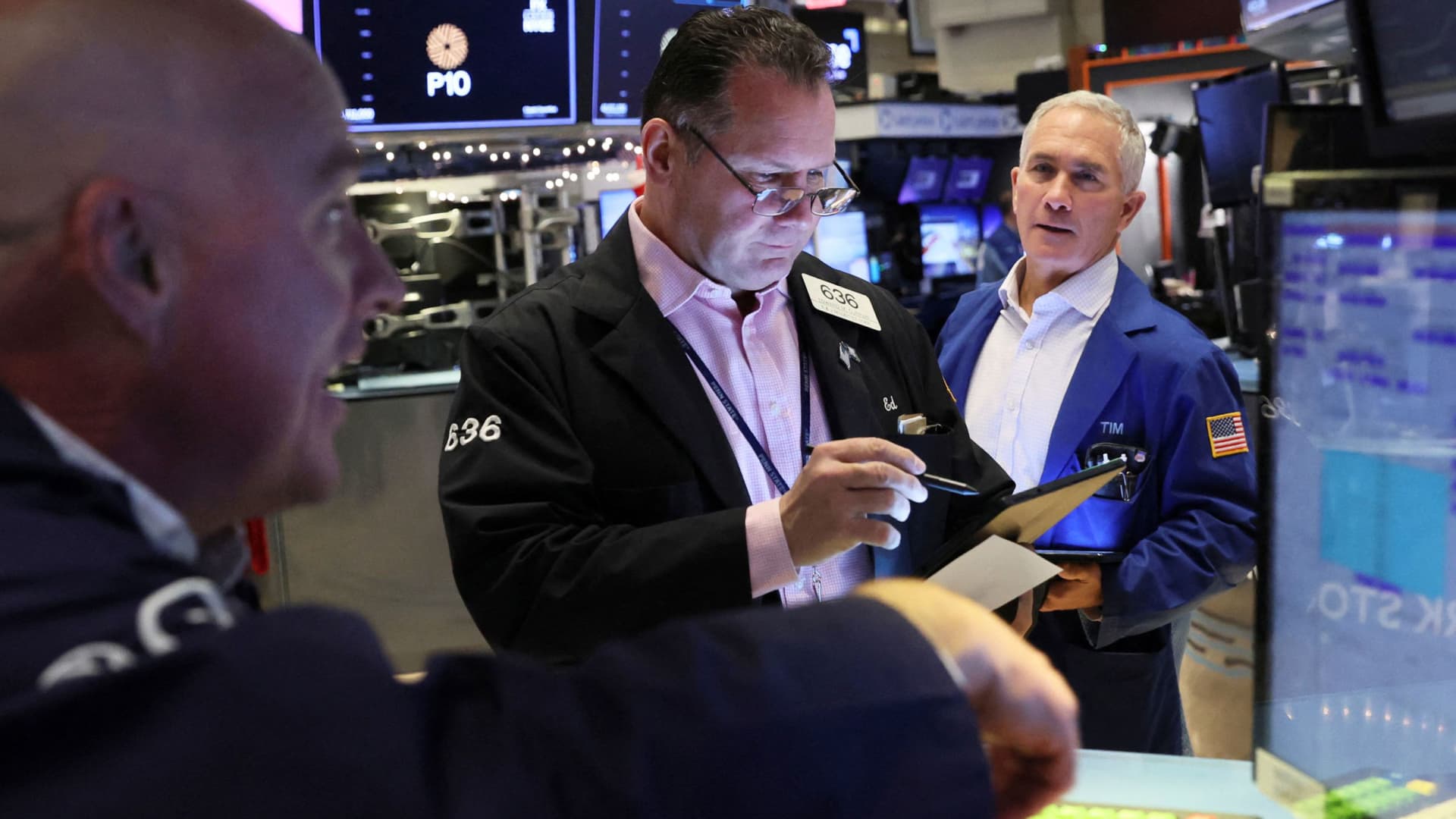Investors should look to ‘good quality corporate debt and gold’ in 2023, strategist says

Traders work on the floor of the New York Stock Exchange (NYSE), December 5, 2022.
Brendan McDermid | Reuters
LONDON — As fundamentals hold up and tight financial conditions weigh on stock markets, corporate debt and gold could be strong investment options in 2023, according to Michael Howell, managing director at CrossBorder Capital.
A slowing economy, tightening financial conditions and rising yields might typically prompt greater stress in the corporate debt markets and a higher rate of delinquencies. But corporations have so far managed to refinance with comparative ease through the current cycle.
Howell acknowledged that things may get slightly more difficult for some areas of the market, but said that many corporations, particularly high growth companies, are in “pretty decent shape.”
“Balance sheets are good, so far revenues seem to be holding up, and they [companies] can access borrowing from the banks,” Howell said Wednesday on CNBC’s “Squawk Box Europe.”
“If you go back to 2008, remember the banks’ financing tap turned off very quickly, and that was where there was a real problem. So, this time, corporate debt markets are actually in a reasonably good shape, so that is an area that I would suggest is not a bad area for 2023.”
Market participants have in recent months been on the lookout for a “pivot” from the U.S. Federal Reserve and other major central banks, after a year of aggressive interest rate hikes to combat sky-high inflation.
Howell said a potential such pivot in 2023 would likely impact markets. He suggested central banks will move to provide greater liquidity to markets and protect against the downside risk of a weakening economy before they will give up their hawkish stance on interest rates. He drew a comparison with the U.S. economic recession of March-November 2001, when the Fed began cutting rates early in the year.
“The economy didn’t turn until the end of 2001…the corporate debt market picked up prior to that, around about Q2, Q3 [second, third quarter] of 2001. Equity markets, I’d say it was much more of a 2002 event. The government bond markets did pretty much nothing through the year, they probably delivered maybe a decent mid-single figure return,” Howell explained.
“Where you want to be positioned next year is good quality corporate debt and gold.”
At face value, expectations of additional liquidity from central banks in 2023 seem at odds with the hawkish signals sent in recent weeks by the Fed and the European Central Bank. This messaging surprised markets and added pressure on stocks and other risk assets.
Howell argued that, while the ECB may be the last to do so, the Fed and the People’s Bank of China (PBoC) have already begun introducing liquidity.
“The PBoC is already putting in more liquidity than they have done in 18 months — this is a clear turnaround. China needs to boost the economy and the People’s Bank is the way to do that,” he said.
“The Federal Reserve is adding liquidity. You’ve got oil prices which are below $80 a barrel — that will release liquidity into the system. The dollar is down almost 10% from its peak — that will boost the FX swap market, which is a key area of shadow banking. So all these things are beginning to pick up.”
Howell stressed that the market is currently at “maximum tightness” and that its liquidity position can only improve in 2023 — but that this does not mean a “green light for equities just yet.”









